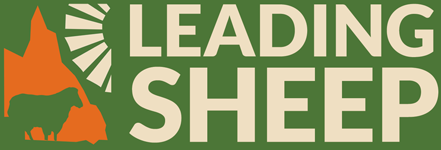The Breech Strike Prevention Update is held every two years by Australian Wool Innovation (AWI) and as the name suggests updates industry and others on the progress in breech strike prevention. The audience included representatives from the sheep industry, Australia wide, the RSPCA as well as a number of animal welfare/rights groups. A representative made a concluding statement on behalf of the welfare groups present that went along the lines of, that they were pleased with the progress and the effort made.
Leading Sheep is shortly to commence a regular feature in the Queensland Country Life titled ‘Flocktalk’. A number of the speakers will be reporting the progress and outcomes of their work in this feature, focussing on what their research means for Queensland sheep producers. The summary below is from my notes at the update.
AWI have available the PowerPoint presentations from every speaker and if you want more detail or want to clarify anything go to: www.wool.com/en/on-farm-research-and-development/sheep-health-welfare-and-productivity/sheep-health/breech-flystrike/R-and-D-update.The information is well worth a few minutes to review the areas that are of interest to you.
Breeding for fly strike resistance
Breeding for fly strike resistance has two centres of research. WA where dags are a particular focus and Armidale where different indicator traits are needed to select for resistance. At Armidale, despite great progress in the last few years, even in the resistant group, breech strike rates are above what we normally see in Queensland and what many would consider commercial.
Genomics
Genomics research offers the opportunity to hasten selection for breech strike resistance. Genomics research is also, and I think probably more importantly, focused on the blowfly.
Mulesing alternatives
Of the other mulesing alternatives discussed, Skin Traction is progressing. It uses a needle-less, hydraulic injection but at this stage is slower than mulesing, requires a trained and accredited contractor and only for older/heavier sheep (adult skin, 30kg minimum, condition score > 2.5, breech wool < 8mm). It has reached an advanced stage where training and accreditation issues for contractors are being actively discussed.
Liquid Nitrogen has been trialled but it is in the early days. The liquid nitrogen is applied using four specially designed clamps and can be done at lamb marking.
Use of laser technology has not been a goer at this stage. The treated areas saw the wool regrow. AWI is reviewing this area of research to identify a way forward.
The plastic clips, that have been discussed in detail in the past and demonstrated at various events throughout Queensland, were not discussed at this update. The clips are being used by an increasing number of producers.
Pain relief
Meloxicam is a new pain relief product administered between the teeth and the gum, absorbed through the mucous membranes, works within 8 minutes and lasts for 24 hours. Producers will be able to ask for a sedative to be added at a low dose. The product will be on the market in November 2014 for cattle and in 1-2 years for sheep. It will be retailed in 200ml bottles. Initially it will be registered for tail docking and castration but the company is hoping to also have it registered for mulesing. An indicative cost of approximately 50 cents per head was given. Manufacture is by Troy Laboratories. It will be registered for a range of uses where pain relief is required in both sheep and cattle.
Comparison of methods for castration and tail docking
Cold and hot knife, Te Pari hot knife and rings were compared for castration and tail docking. Castration had a greater impact than tail docking on subsequent activities and abnormal behaviours. None of the procedures were demonstrably better or worse when all assessment criteria were considered.
Declaration of mulesing status
Many sheep producers are leaving the Mulesing Status Declaration blank when selling wool. Market research has shown that it pays to declare the status even if the sheep are mulesed. Leaving the box blank attracts a small but measurable discount. No significant premium for wool greater than 38 N/Ktex was recorded in the same work. The full analysis will be available at www.wool.com in a few weeks (Allan Wang: Wool Market Premiums and Discounts).
Key points:
- Breech strike resistance selection – Key targets 2:2:3 – 2 for wrinkle, 2 face cover and 3 dag score.
- Cull struck sheep (one ewe from the susceptible group at Armidale has been struck 15 times to date)
- Don’t just stop mulesing. Need to re-balance basket of other control procedures and plan progression to phase out mulesing.
- Australia wide the majority of merino sheep producers are mulesing with pain relief.
- TriSolfen has been changed from S4 to S5 – now available over the counter.
- Meloxicam may be available for mulesing.
Noel O’Dempsey
Leading Sheep South Region Coordinator
odempsn@harboursat.com.au (07) 4653 1441
